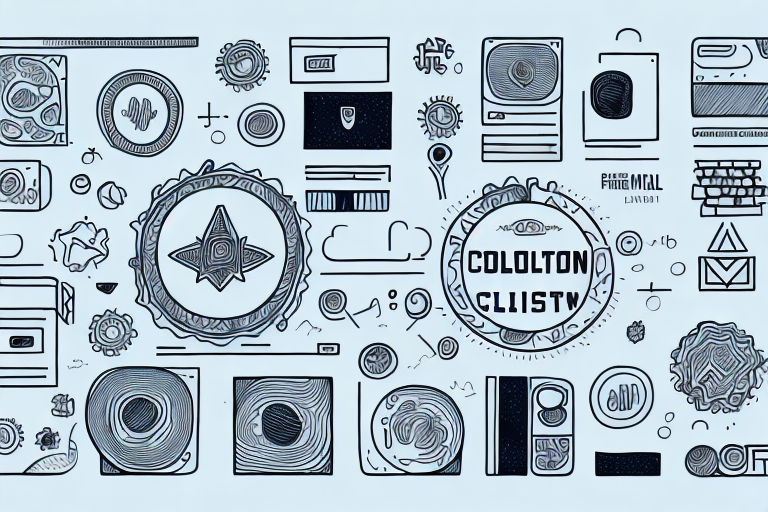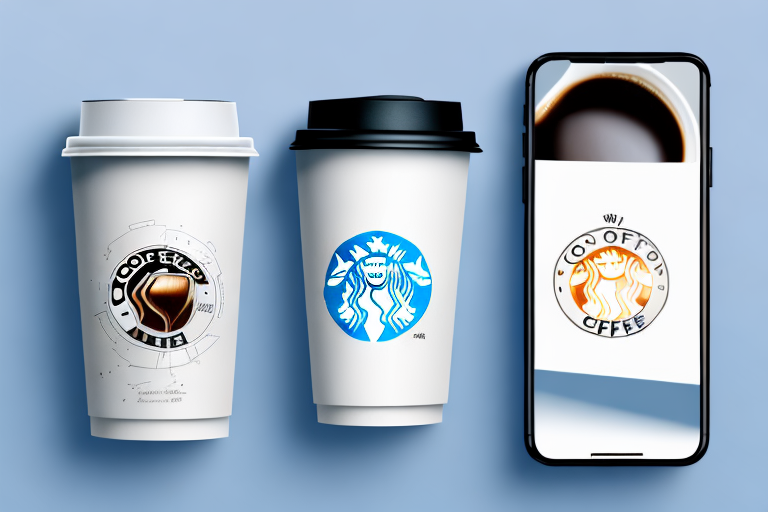In today's fast-paced and competitive business landscape, collaborations have become a powerful tool for brands looking to make a mark. By partnering with like-minded companies, brands can leverage each other's strengths, tap into new markets, and create innovative products and experiences. In this article, we will delve into the world of brand collaborations and explore the key factors that contribute to their success. We will also take a closer look at 10 examples of brand collaborations that have yielded impressive results. So let's jump right in and discover the power of collaboration!
Understanding the Power of Brand Collaborations
Brand collaborations are more than just marketing tactics - they are strategic partnerships that can unlock tremendous value for both parties involved. By joining forces, brands can amplify their reach, enhance their credibility, and tap into new customer segments. Here, we will explore the various benefits of brand collaborations and delve into the key factors that contribute to their success.
Brand collaborations have become increasingly popular in today's competitive business landscape. Companies are realizing that by teaming up with another brand, they can create a powerful alliance that benefits both parties. These collaborations go beyond traditional marketing efforts and allow brands to tap into each other's strengths, resulting in a win-win situation.
One of the key benefits of brand collaborations is the ability to tap into each other's customer base. By partnering with a brand that has a similar target audience, companies can expand their reach and potentially drive new sales. This cross-promotion can be incredibly effective, as it allows brands to leverage the trust and loyalty that their partner has already established with their customers.
In addition to expanding their reach, brand collaborations also enable companies to combine their expertise and resources. This collaboration often leads to the creation of unique products or services that neither brand could have developed alone. By pooling their knowledge and resources, brands can push the boundaries of innovation and deliver exceptional value to their customers.
Furthermore, brand collaborations can help enhance brand perception. By associating with partners who share similar values and ethics, brands can strengthen their image and build trust with their target audience. This association creates a halo effect, where the positive attributes of one brand transfer to the other, resulting in an overall boost in brand credibility.
The Benefits of Brand Collaborations
Collaborating with another brand can offer a range of benefits. Firstly, it allows brands to tap into each other's customer base, expanding their reach and potentially driving new sales. This cross-promotion can be incredibly effective, as it allows brands to leverage the trust and loyalty that their partner has already established with their customers.
Secondly, collaborations enable brands to combine their expertise and resources, resulting in the creation of unique products or services that neither brand could have developed alone. This collaboration often leads to innovative solutions that meet the evolving needs of customers.
Thirdly, brand collaborations can help enhance brand perception by associating with partners who share similar values and ethics. This association creates a halo effect, where the positive attributes of one brand transfer to the other, resulting in an overall boost in brand credibility.
Lastly, brand collaborations can provide an opportunity for brands to differentiate themselves in a crowded market. By partnering with a complementary brand, companies can create a unique value proposition that sets them apart from their competitors. This differentiation can be a powerful tool in attracting new customers and retaining existing ones.
Key Factors for Successful Collaborations
While brand collaborations can be exciting, not all partnerships yield the desired results. It is crucial to consider certain key factors for a successful collaboration. Firstly, brands must ensure that their values and target audiences align. This alignment lays the foundation for a cohesive partnership and minimizes the risk of diluting brand identity.
Secondly, collaborations work best when the products or services being offered complement each other. This synergy creates a unique value proposition and enhances the appeal of the collaboration. When two brands come together to offer a product or service that seamlessly integrates their expertise, it creates a compelling offering that is difficult to replicate.
Furthermore, effective communication and collaboration between the partnering brands are essential for success. Open and transparent communication ensures that both parties are aligned in their goals and objectives. It also allows for a smooth execution of the collaboration, minimizing any potential conflicts or misunderstandings.
Lastly, brands should also consider the long-term potential of the collaboration. While short-term gains are important, a successful brand collaboration should have a lasting impact on both brands involved. By focusing on building a strong foundation and nurturing the partnership, brands can create a sustainable collaboration that continues to deliver value to both parties and their customers.
The Art of Choosing the Right Partner
Choosing the right partner for a collaboration is a critical step in the process. It involves conducting thorough research and due diligence to identify a partner that aligns with your brand's values and has a similar target audience. Let's explore two key factors that can help in selecting the right collaboration partner.
Aligning Brand Values and Audiences
When selecting a collaboration partner, it is essential to identify a brand that shares similar values and ethics. This alignment ensures that both brands can authentically communicate their message and maintain brand integrity throughout the collaboration. Additionally, considering the target audience is crucial to ensure that the collaboration resonates with the right customer segments and adds value to their lives.
Complementing Product Offerings
In addition to shared values, brands must evaluate how their product offerings complement each other. Collaborations work best when the combined products or services provide a unique and compelling proposition to the customers. By combining expertise and resources, brands can create innovative offerings that drive customer interest and result in increased sales and market share.
Navigating the Collaboration Process
Once the right partner has been identified, navigating the collaboration process requires careful planning and execution. Successful collaborations are built on clear goals and effective communication. Let's explore two crucial aspects of navigating the collaboration process.
Establishing Clear Goals and Expectations
Before diving into a collaboration, it is essential to establish clear goals and expectations for both parties involved. By defining the desired outcomes and setting realistic expectations, brands can align their efforts and work towards a common objective. Clear goals also help in evaluating the success of the collaboration and identifying areas for improvement.
Communication and Coordination Strategies
Effective communication is the cornerstone of successful collaborations. Brands must establish open lines of communication, both internally and externally, to ensure that everyone involved is on the same page. Regular meetings, progress updates, and transparent decision-making can help keep the collaboration on track and address any challenges that may arise along the way.
Evaluating the Success of a Collaboration
Measuring the success of a brand collaboration is essential in understanding its impact and identifying areas for improvement. Here, we will explore two key aspects of evaluating collaboration success.
Measuring Collaborative Impact
To measure the impact of a collaboration, brands can track various metrics such as sales revenue, market share, customer engagement, and brand perception. By analyzing these metrics, brands can gauge the success of the collaboration and identify any gaps or opportunities for growth.
Learning from Collaboration Outcomes
Every collaboration offers valuable insights and learnings that can be applied to future partnerships. Brands should conduct a thorough post-collaboration analysis to understand what worked well and what can be improved. By leveraging these learnings, brands can continuously refine their collaboration strategies and drive even greater success in the future.
In-Depth Look into Successful Brand Collaborations
Now that we have explored the key factors for successful brand collaborations, let's take a deeper dive into 10 examples of collaborations that have captured the market's attention and achieved impressive results.
Collaboration 1: Brand A and Brand B
Brand A and Brand B joined forces to create a limited-edition collection that combined Brand A's technological expertise with Brand B's design excellence. The collaboration resulted in a range of products that not only appealed to existing customers but also attracted new ones, driving significant sales growth for both brands.
Collaboration 2: Brand C and Brand D
Brand C and Brand D, both recognized for their commitment to sustainability, partnered to launch an eco-friendly product line. By leveraging their shared values and offering environmentally conscious customers a unique and ethically sourced alternative, the collaboration garnered positive customer feedback and boosted brand reputation.
Collaboration 3: Brand E and Brand F
Brand E, a well-known sportswear brand, collaborated with Brand F, a popular celebrity, to create a limited-edition signature collection. By tapping into Brand F's massive fan base and offering exclusive products that reflected their idol's style, the collaboration generated tremendous buzz and resulted in sold-out merchandise within hours.
Collaboration 4: Brand G and Brand H
Brand G, known for its innovative technology, partnered with Brand H, a leading lifestyle brand, to launch a collection that seamlessly integrated technology into everyday essentials. This collaboration not only showcased the brands' collective innovative prowess but also attracted a diverse customer base looking for both practicality and style.
Collaboration 5: Brand I and Brand J
Brand I, a renowned skincare brand, collaborated with Brand J, a popular wellness influencer, to develop a range of holistic skincare products. By combining scientific expertise with wellness principles, the collaboration not only provided customers with effective skincare solutions but also tapped into the growing demand for holistic well-being.
In conclusion, brand collaborations present immense opportunities for brands to unlock new markets, enhance brand perception, and create unique products or experiences. By understanding the power of brand collaborations and considering key factors such as values alignment and complementing product offerings, brands can increase their chances of success. Additionally, by navigating the collaboration process through clear goals and effective communication, brands can maximize the benefits of partnerships. Lastly, by evaluating collaboration outcomes and learning from them, brands can continuously refine their collaboration strategies and drive greater success. So why wait? Start exploring the world of brand collaborations and unlock your brand's full potential!
Collab with brands and creators. Request your invite at collabs.io



